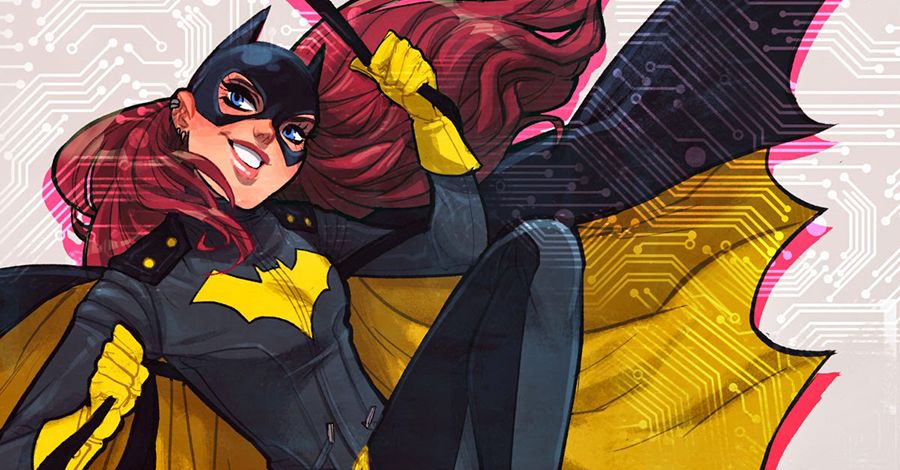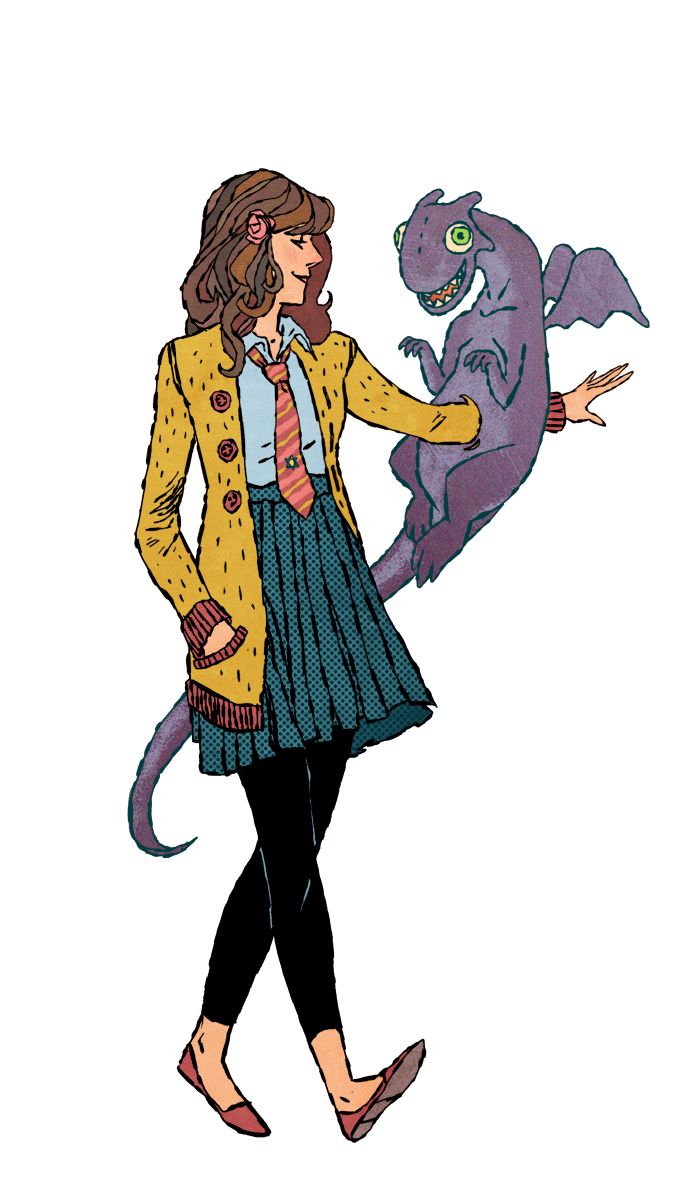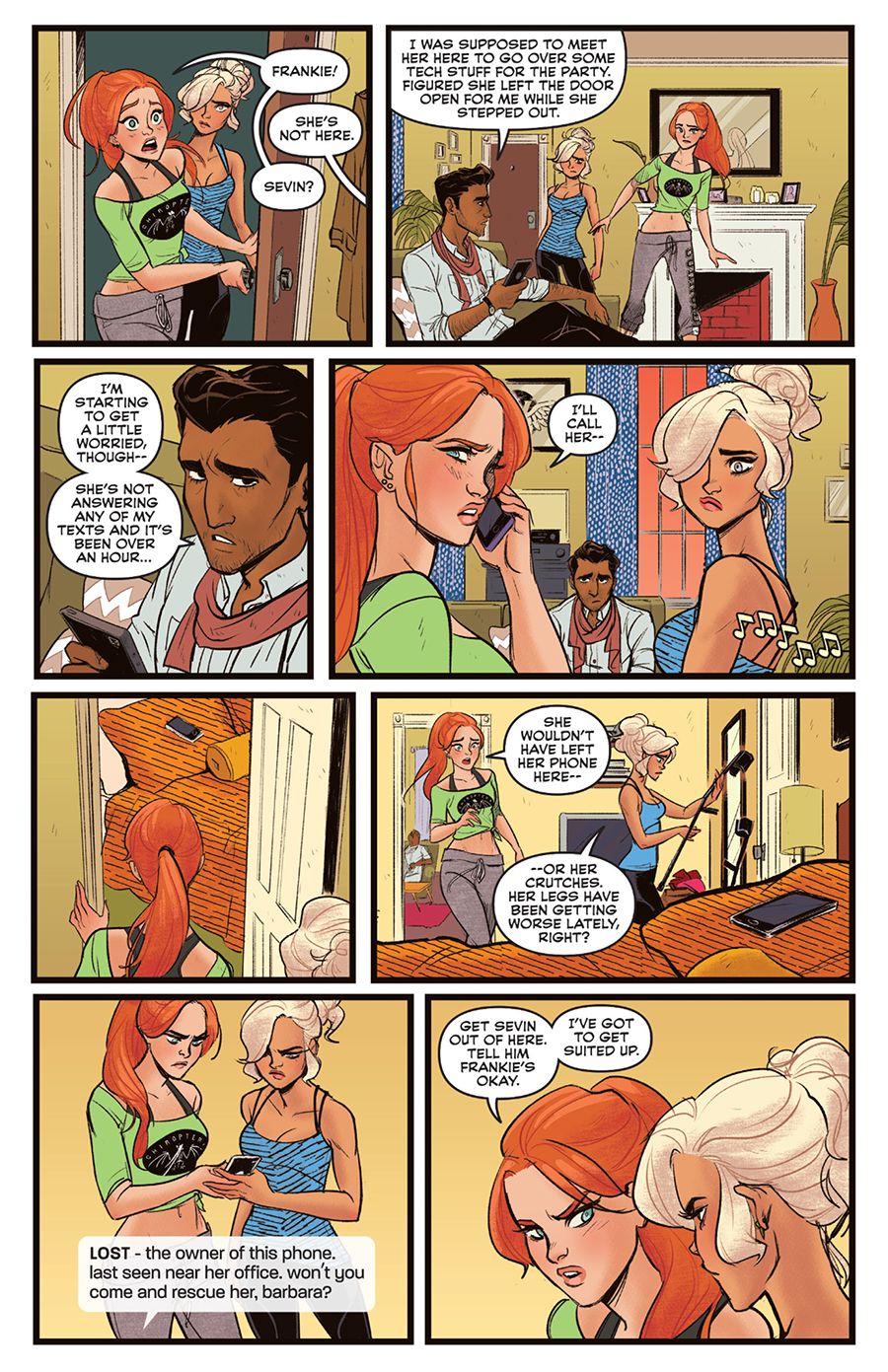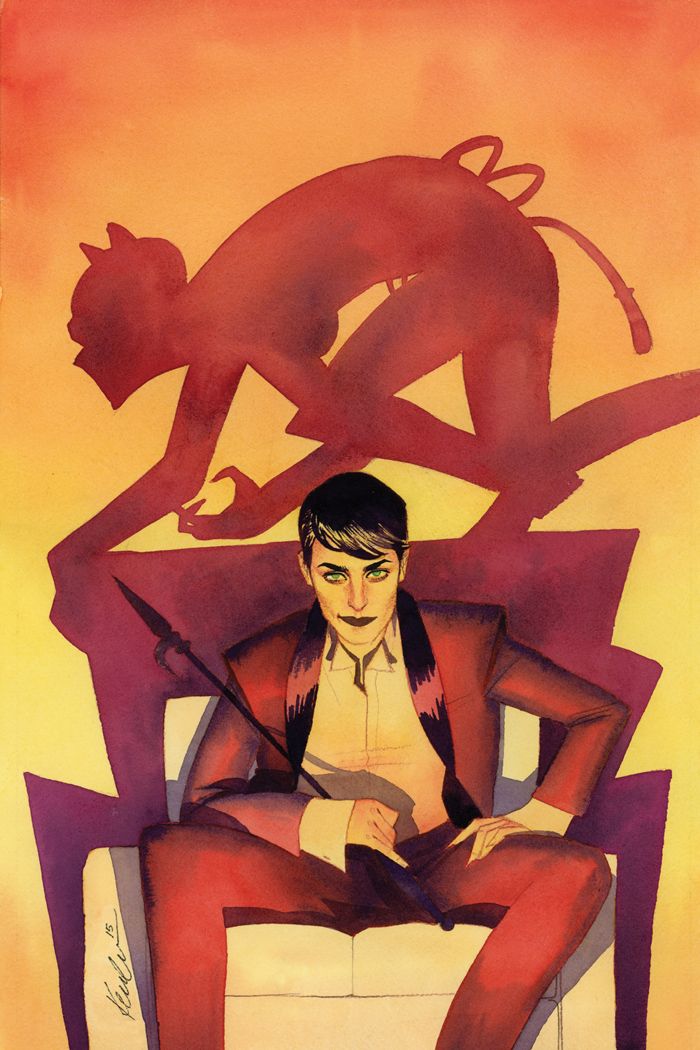"Sorry guys, it's early," "Batgirl"artist Babs Tarr said by way of introduction to kick off her "Fashion in Comics" panel at WonderCon on Sunday morning. Tarr was joined by fellow artists Kevin Wada (cover artist, "She-Hulk"), Jake Wyatt (artist, "Ms. Marvel") and Kris Anka (artist, "Uncanny X-Men") for a discussion on the intersection of fashion and comic book art, moderated by Tarr's "Batgirl" collaborator, writer Brenden Fletcher.
"These four are best buddies, and this is just going to be chaos," Fletcher joked.
The panelists started by talking about their general approach to fashion in comics. "You kind of have to consider how clothes and costumes translate to the page, how not everything you wear in real life can translate to the comic book page," said Tarr.
"Not every character in comics can be fashioned up," Wyatt said. "Logan's going to dress like a lumberjack. That's just Wolverine. If you put him in some couture flannel, it's not going to work. Quentin Quire is going to be a pink-haired angry schoolboy forever, because his style doesn't allow him to change. But Jubilee can change."
CBR TV: Tarr & Fletcher on Rising from Obscurity & Stewart's Importance to "Batgirl"
"When she was designed, her character was trendy," added Tarr.
Going off of that topic, Fletcher then asked about the process of figuring out what each character wears. "I tend to do designs before they've even written anything," Anka said. "I get a description either from the editor or the writer, months in advance, before they even have anything in mind. I would take what their goal in mind is, then I would look at the history of the character, where they're from, all of their other costumes. I try to make a new costume that would fit what they're going for, as well as reflect everything that's been before. I will just keep going back and forth until everyone's happy. It depends on how many cooks there are in the kitchen. With Spider-Woman, there were six cooks in the kitchen. It took me more than three months, just constantly going back and forth until everyone's happy. With Psylocke, that [redesign process] was one day."
Wyatt noted that Anka was responsible for the return of Storm's mohawk, a look she originally sported in the mid-'80s. "['Uncanny X-Force' writer] Sam Humphries is a big fan of the mohawk," Anka said. "Just to kind of make him happy, I threw the mohhawk in one of the roughs -- and Sam just latched on. They asked ['Uncanny X-Men' writer] Brian [Bendis] and [former 'Wolverine and the X-Men' writer] Jason [Aaron], and they were like, 'Sure, why not?'"
Building on that, Fletcher asked if the artists often see something they've drawn or designed influence the direction of a comics story. Tarr noted that Fletcher himself had added cosplaying, motorcycle-riding villains to "Batgirl" after she drew a cover featuring "motorcycle babes."
"The first thing I drew that Marvel ever saw was I did all these X-kids as prep-school students," Wyatt said, "and almost every assignment I've gotten from Marvel is: 'Okay, the concept is schoolchildren.' I ended up being the schoolkid guy."
Fletcher asked Tarr to talk about her design process, including the way she gives special attention to every background character. "We throw a lot at her, in terms of characters that she needs to tackle and design and redesign," said Fletcher. "You treat them all with the same level of respect as you do the main character."
"Babs' whole supporting cast [in 'Batgirl'], you guys would tell me their personality and I would imagine what their style would be like," said Tarr. "I have a Pinterest board for every one. They all have their own individual style, and I think that's really important, because it creates a richer look and a richer environment. I feel like I read comics sometimes and I'm looking at their clothes and it takes me out of the comic."
Spider-Woman Debuts Modern Makeover with New Costume
"Even when you give me random robbers, I'm so bored by them," she continued, "and I was like, 'I'll give them skull bandannas.' Whenever I'm bored, I'm like, 'cooler outfit.' It's so important to know what people are wearing if you're doing a modern book."
"I actually didn't do any of these things for a while, and then my wife started criticizing my work," Wyatt said. "I was drawing a Jubilee, and she said, 'That's a boring Jubilee.' And she came back with a bunch of photos from editorial shoots and pictures she got off of Pinterest. She showed me, and then I got pretty into it. I think how you design your incidentals is a good litmus test for your work."
"If I had to do any fashion research, I would never stop," Anka said. "If one panel was Hank McCoy drinking coffee, I would search through 60 years of comics to find if he ever had a mug."
Fletcher talked about the way that Tarr's artistic interests have influenced his and "Batgirl" co-writer Cameron Stewart's plots. "Babs sent Cameron and I a list of stuff that she wants to draw in 'Batgirl,' so essentially the upcoming arcs will be crafted around this random list of stuff. It's a completely different way of working. Usually the writer comes up with the story and the artist has to figure out how to draw it."
"All comics should be made that way," Wyatt added. "That's part of how '60s Marvel worked. The artist would be like, 'Hey, I drew this costume,' and Stan Lee would come up with an alliteration-filled story for it."
Fletcher brought up the balance between style and function, and the question of whether Batgirl (or any superhero) can actually fight in their costume. "She can, because I said so," Tarr asserted. "That's how that works. You have to have a little suspended disbelief with comics."
"Nothing about Dr. Doom makes sense, but he's fantastic, because he carries it," said Anka. "They just need to look like they're comfortable in whatever they're wearing."
"I think that there's room in comics for literally every school of design, as absurd or as realistic as you want to go," said Wyatt. "But it has to fit the narrative."
EXCLUSIVE: She-Hulk Serves Face In Fierce Series Finale Cover
Wada brought up that for his work on "Catwoman's" covers, writer Genevieve Valentine is closely involved with the design process as well. "One thing that Genevieve has been trying to drill into me is capturing a certain likeness for [Catwoman]. She has an actress she picked out. That's the goal." He couldn't, however, remember the actress' name.
"I had lunch with Genevieve a couple of weeks ago in New York," said Fletcher, "and she took me into a jewelry store and showed me the stuff, the different pieces for the different characters that she was thinking of. I was kind of blown away by the level of detail that she's considering as a writer for the comic."
Fletcher asked the artists if they consider cosplay when designing costumes. "I think that's a slippery slope," Tarr said. "If you start compromising the costume to accommodate real life."
"I've actually heard some editors say they want to make this design friendly to cosplay," Wyatt said. "My thoughts on that are, I've seen some 9-year-olds walking around in a full-on Gundam exo-suit. They'll figure it out. You don't need to make that easy to cosplay, they will find a way. They're going to make that work. Do what's awesome, and prepare to be awed. Prepare to behold the majesty of that stuff walking around the con. I think the cosplay kids can handle what you throw at them."
Fletcher asked about the influence of fashion design in comics on real-world fashion, which Tarr called "casual cosplay." "I think that's really fun," said Tarr. "Batgirl's so down to earth, you could just wear those boots out and a leather jacket." Fletcher then pointed out a woman in the audience who was doing just that.
"I've seen lots of casual cosplay hoodies and T-shirts," Wyatt added.
The woman dressed in the Batgirl-style outfit then asked about recent toned-down redesigns of DC's female characters -- specifically asking if Supergirl's look is in need of a similar redesign.
"We can't talk too much bad shit," Tarr said, but Anka disagreed.
"I can, I don't work for DC."
"I would like to redesign [Supergirl's costume] very badly, that's all I will say," Tarr said.
The panelists agreed that the amount of skin shown in a character's outfit depended on the character's personality. "Namor is going to walk around barefoot and in a Speedo wherever he goes, because he likes himself," Wyatt said. "Scott [Summers] is going to cover up because he hates himself."
Wyatt came around to summing up the theme of the panel by connecting it to the past: "Fashion in comics is not a new thing. If you go back, John Romita came on to drawing Spider-Man from drawing romance comics, and so Spider-Man's surrounded by those stone cold foxes. They look amazing. Gwen [Stacy] is so iconic that people still put her in that hairband. It's not new."




